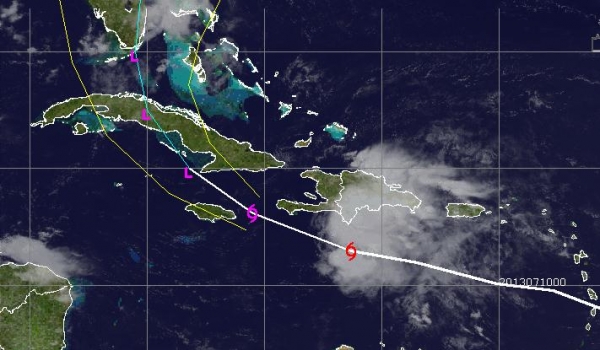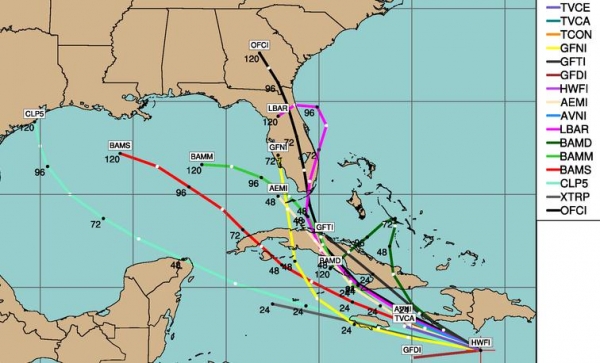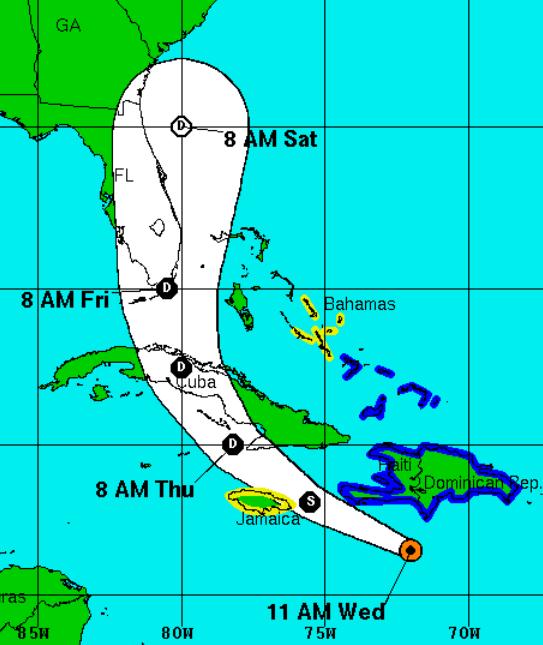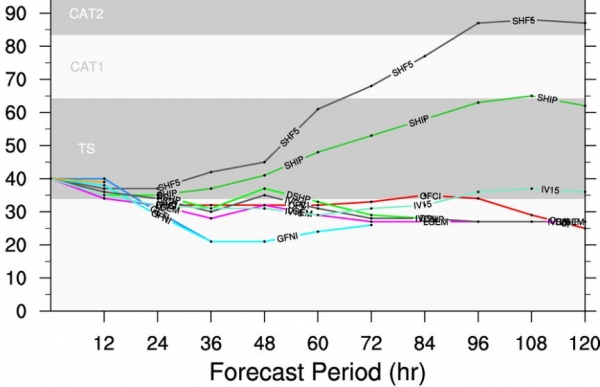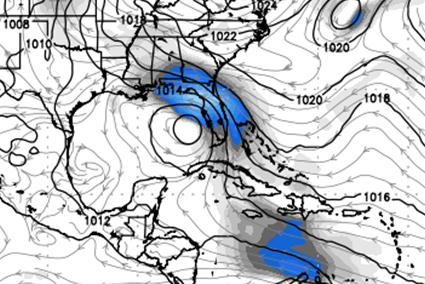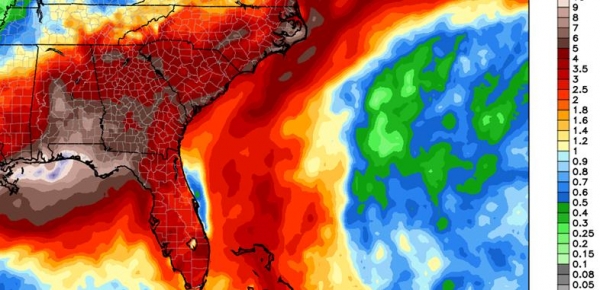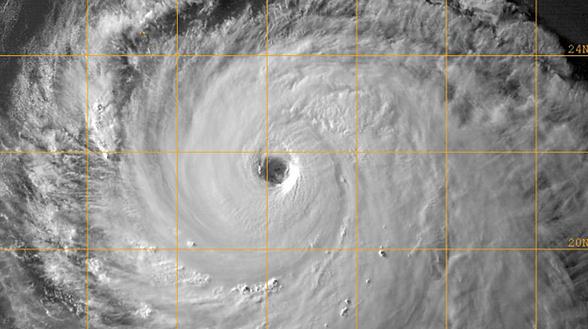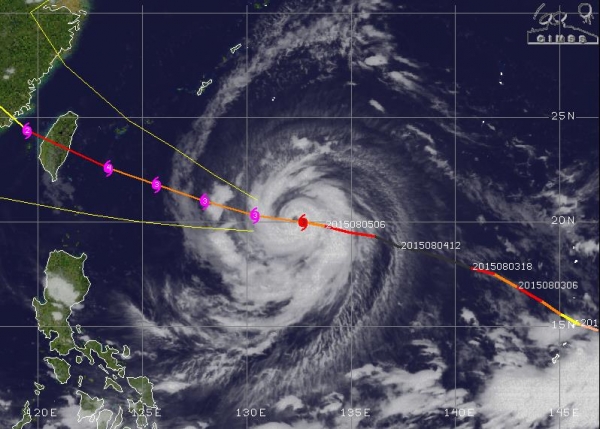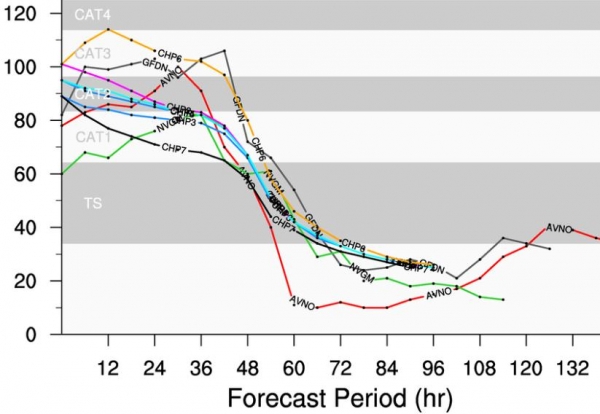Higher Ground
Do you live in a flood plain? You may be (unpleasantly) surprised the next time you catch up with your insurance agent.
Many residents of Toronto didn't think they
lived in a flood zone, either. Monday evening two month's worth of rain
soaked the city; a record flash flood.
We've had floods since the dawn of time, but we
haven't seen 400 parts per million in CO2 levels for at least 800,000
years. It's basic physics: a warmer atmosphere holds more water vapor,
loading the dice in favor of more extreme rain events.
At a recent talk in Breezy Point locals marveled
at the 7 inches of rain that fell in one night in late June. The State
Climate Office counts FOUR 1-in-1,000 year floods since 2004, just in
Minnesota. No, it's not your imagination. The rain is falling harder.
We salvage another amazing day with blue sky
& low humidity. T-storms rumble in this weekend, and a string of 90s
may return by the end of next week. 100F highs aren't out of the
question in about 7-8 days.
It looks like Chantal may fizzle, drenching
Florida with tropical rains by Saturday. Meanwhile Super Typhoon Soulik
is headed toward Taiwan with 140 mph winds. Puts the mosquitoes into
perspective, huh?
Anniversary Of The Hottest Observed Temperature on Earth. Today's edition of
Climate Matters focuses on heat, wildfires outside of Las Vegas, and why A/C in Tucson isn't optional these days: "
100
years ago today, Death Valley, CA hit 134 degrees, the hottest
temperature ever recorded anywhere on the globe. As we mark this
anniversary, we also look at some of this year's heat records and
stretches in the Southwest."
Except of an Alerts Broadcaster Briefing issued Wednesday:
What we're tracking at this hour:
* Tropical Storm Chantal
has lost much of it's circulation, 40-45 mph sustained winds pushing
toward Cuba. Hurricane formation is unlikely with this system, but the
soggy remains of Chantal may spark inland flooding from Florida into the
Gulf Coast by Saturday and Sunday.
*
Soulik
is approaching "Super-Typhoon" status, with sustained winds of 140-150
mph, expected to hit Taiwan by Friday (U.S. time) as a Category 2-3
storm capable of widespread damage and flooding. Coastal China will also
see wind, storm surge and inland rainfall/flooding damage, but right
now it appears Shanghai will be spared a direct hit.
Tracking Chantal.
The morning's satellite image shows a disorganized swirl associated
with Tropical Storm Chantal, brushing Hispaniola with heavy rains. More
serious flash flooding is possible across Cuba Thursday into Friday
morning.
Where Is Chantal Headed? There has been a noteworthy
westward shift
in all the computer solutions in the last 24 hours. Chantal poses a
lesser risk to the East Coast, with a somewhat greater potential for
coastal/inland flooding across Florida and the Gulf Coast by the
weekend.
Timing Chantal.
Chantal is forecast to weaken from tropical storm to tropical
depression status by Thursday morning, reaching the Florida Keys by
Friday morning, a position 200-250 miles farther west than the models
were predicting yesterday at this time.
Facilities in Florida should be on alert from Friday into Sunday for inland flooding concerns.
Chantal: Hurricane Formation Unlikely.
Most of the models weaken Chantal to tropical depression status
(sustained winds under 39 mph). A couple of models continue to show
strengthening, and if (a big if) the center of Chantal moves into the
Gulf of Mexico further strengthening would be likely by the weekend.
Chantal's growth potential is modest, at best, but it's always a good
idea not to discount ANY tropical system.
Midday Saturday.
The Navy NAVGEM model brings the soggy remains of Chantal (depression
or possibly still a tropical storm) into the eastern Gulf of Mexico by
midday Saturday, soaking much of Florida with tropical, 3-5"+ rains.
This seems like a reasonable solution. Keep in mind the potential for
inland flooding has little to do with the intensity of the storm (is it a
tropical storm or hurricane) and everything to do with the
forward speed of Chantal.
The slower the forward movement, the greater the risk of extreme rainfall amounts capable of major flooding across Florida by Friday and Saturday.
Rainfall Potential.
ECMWF (European) guidance shows some 7-12" rainfall amounts near
Pensacola and Mobile by the middle of next week; much of this moisture
from the remains of Chantal. It's still early to try to pin down heavy
rain plumes and time flooding, but facilities from Florida to southern
Georgia, Alabama and the Gulf Coast should be on alert through the
weekend for heavy heavy rainfall totals and possible flash flooding.
Meanwhile, halfway around the world....
Super-Typhoon.
"Soulik" may become a super-typhoon today, with sustained winds topping
150-155 mph. Some weakening is likely before Soulik impacts Taiwan by
Friday (our time).
Soulik's Projected Path.
This formidable typhoon (same thing as a hurricane) is forecast to clip
the northern part of Taiwan by Friday (U.S. Time) or Saturday local
Taiwan time. Of course Taipei is located on the northern part of the
island, and sustained winds Friday may top 100 mph, with a 8-14 foot
storm surge. Considerable damage to infrastructure, homes, businesses
and hotels is possible by late week. Facilities in Taiwan should be on
maximum alert for the next 72+ hours.
Direct Strike. In addition striking Taiwan, Typhoon Soulik is expected to hit
Fujian and Zhejiang, on mainland China. This coastal region is one of
the most heavily populated on Earth, home to nearly 90 million people.
Damage from 100 mph+ winds and a 10-14 foot storm surge may be extensive
Friday and Saturday. Graphics: Weather Bell.
Predicting Soulik's Intensity.
Some slight weakening is likely before Typhoon Soulik strikes Taiwan,
but this may still be a formidable Category 2-3 hurricane by the time it
hits land Friday.
Summary:
Chantal needs to be monitored, but right now the concern is more heavy
rain and flash flood potential for Florida and the Gulf Coast than a
significant risk of hurricane development or a major storm surge problem
for coastal regions. We'll watch the storm carefully. I'm much more
concerned about Typhoon Soulik and the implications for Taiwan and
coastal mainland China, where damage may be extensive to severe by
Friday. Facilities in Taipei will be impacted and this storm may deliver
a significant structural and economic blow to Taiwan and coastal China
within 72-96 hours.
The Restaurant Chains With The Most Addictive Food. I
thought this was vaguely interesting - sorry to be including food in a
weather blog, but I'm hungry right now and it seemed like a good idea at
the time. Here's a clip from a story at
Huffington Post: "
Eighty-three
percent of consumers say that cravings are the main reason they
purchase food outside their home, according to a new report by market
research firm Technomic. Nearly everyone is subject to some kind of
comfort food craving at some point, and some restaurants know how to
give customers exactly what they want. Want some cheesy biscuits? Go to
Red Lobster. How about a massive portion of pasta? Hit up The
Cheesecake Factory..."
Climate Stories....
Water Worries: Climate Change in the Desert Southwest. Here's an excerpt of a story from
azcentral.com and USA Today: "...
Today,
the 56 million Americans in the fast-growing desert Southwest —
including those in the megacities of Phoenix, Los Angeles, Las Vegas and
San Diego — are faced with a challenge beyond the region's natural
dryness: coping with an uncertain future of man-made climate change and
how it will impact their life-sustaining supply of water. And while
worries about water lead the list of climate change concerns in the
Southwest, other issues, such as extreme heat waves and furious
wildfires, are also high on the list. Climate change is a special
concern in the Southwest, as the region continues to lead the nation in
population growth, according to the U.S. Environmental Protection
Agency. USA TODAY traveled to Arizona as another stop in a year-long
series to explore places where climate change is already affecting
America..."
Image credit: CAP Canal courterty of Arizona Republic.
Extreme Heat Reveals Extreme Infrastructure Challenges.
We need to upgrade and harden our infrastructure, make it more
resilient to extremes in weather and climate, as this article at
Grist points out - here's a clip: "
Having
trouble beating the heat this summer? Imagine how your infrastructure
feels. Last summer, we told you about extreme heat leading to buckling roads, melting runways, and kinky railroad tracks. Now we’re also hearing about droopy power lines and grounded airplanes. NPR’s Science Friday hosted a discussion
last week with Vicki Arroyo, executive director of the Georgetown
Climate Center, about how cities can adapt to hotter temperatures and
other climate impacts like floods and rising sea levels..."
Photo credit above: WMATA. "
Last summer, high temperatures caused a “heat kink” in the D.C. metro tracks."
Antarctic's Pine Island Glacier Produces Giant Iceberg. The thinking is that warmer ocean water may be responsible for some of this calving of ice in Antarctic; the
BBC reports: "
Pine
Island Glacier (PIG), the longest and fastest flowing glacier in the
Antarctic, has spawned a huge iceberg. The block measures about 720 sq
km in area - roughly eight times the size of Manhattan Island in New
York. Scientists have been waiting for the PIG to calve since October
2011 when they first noticed a spectacular crack spreading across its
surface. Confirmation that the fissure had extended the full width of
the glacier was obtained on Monday. It was seen by the German TerraSAR-X
satellite. This carries a radar instrument that can detect the surface
of the ice stream even though the Antarctic is currently in the grip of
winter darkness..."
How Obama Plans To Make Global Warming Personal. ABC News has the story - here's the intro: "
Which
concerns you more: that polar ice caps are melting or that your kid
suffers from asthma? President Obama is well aware your answer is the
latter. The truth is, you should care about both. That's because
they're related. Climate change has contributed to everything from
rising rates of asthma among children to a seemingly endless allergy
season. The administration wants to point that out. So the White House
bestowed what they've dubbed the "Champions of Change" award on 11
people they say are "protecting public health in a changing climate" on
Tuesday morning..."
Charles Krauthammer's Flat-Earther Global Warming Folly. Here's a clip from a recent
Guardian article that focuses on denier data cherry-picking: "...
Of
course, the choice of the 16-year window is a juicy cherry pick. It
puts the starting point right at the formation of the 1997–1998 El
Niño, one of the strongest in the past century. During El Niño events,
heat is transferred from the oceans to the air, causing abnormally hot
surface temperatures. Focusing on the slow surface air warming over
the past 16 years is like arguing that your car is broken because it
slowed down as you approached a stop sign. Krauthammer is focusing on
an unrepresentative period during which the overall warming of the
planet continued, but less heat was used in warming the air, and more in warming the ocean. However, climate research suggests that this is just a temporary change,
and surface air warming will soon accelerate again. Krauthammer also
complains that "flat-earthers like Obama" have blamed heat waves on
human-caused global warming. Indeed, recent research has shown that Australian heat waves and record-breaking monthly temperature records in general are now five times more likely to occur due to global warming, with much more to come. Papers have concluded
that several individual heat records, like those in Texas and Oklahoma
in 2011 and Moscow in 2010, would not have been broken if not for
human-caused global warming..."
Image credit above: "
Images from the Jet Propulsion
Laboratory in California from 1997 show the build-up of the powerful El
Niño Krauthammer cherry picks." Photograph: AP.
Shift In Plant Hardiness Zone: 1990 to 2006. In the
span of just 16 years you can see a pronounced northward shift in zones,
much of the Twin Cities now in Climate Zone 5. Thanks to meteorologist
Danny Satterfield and
Facebook for this image.

